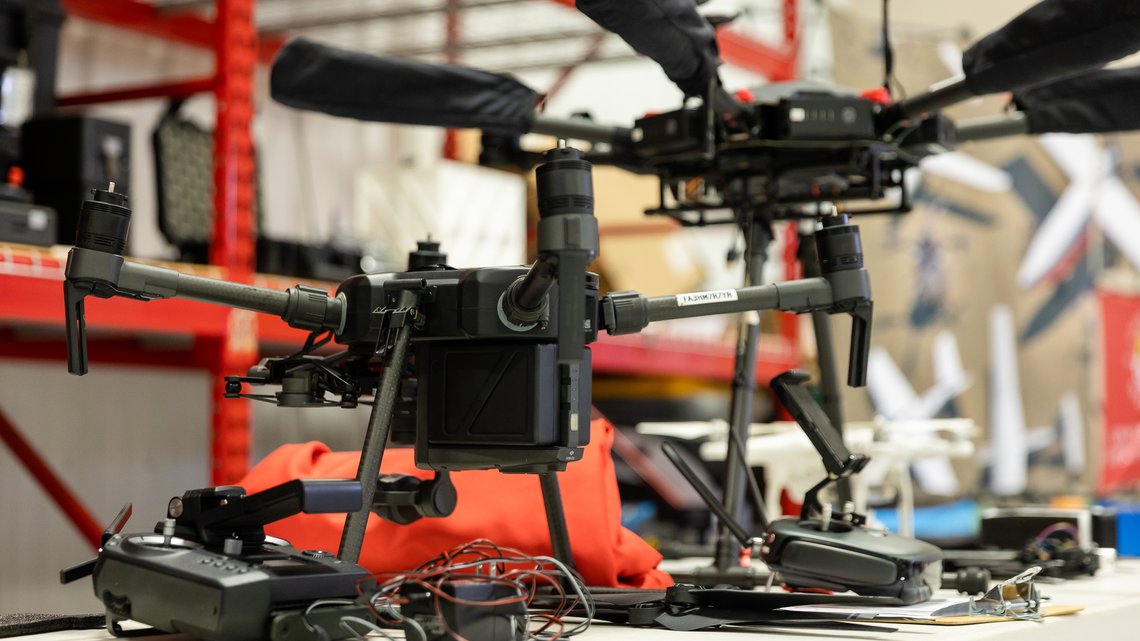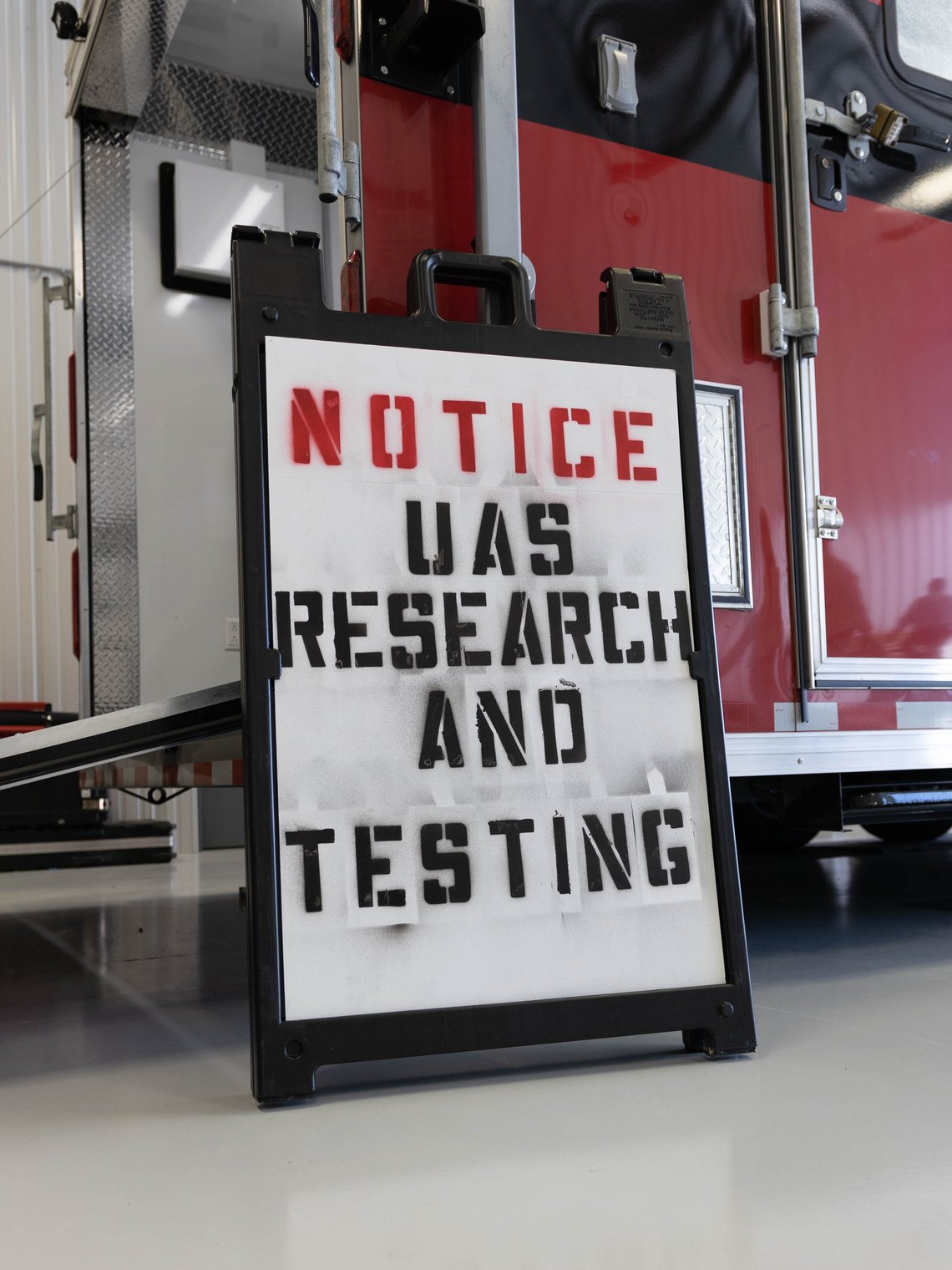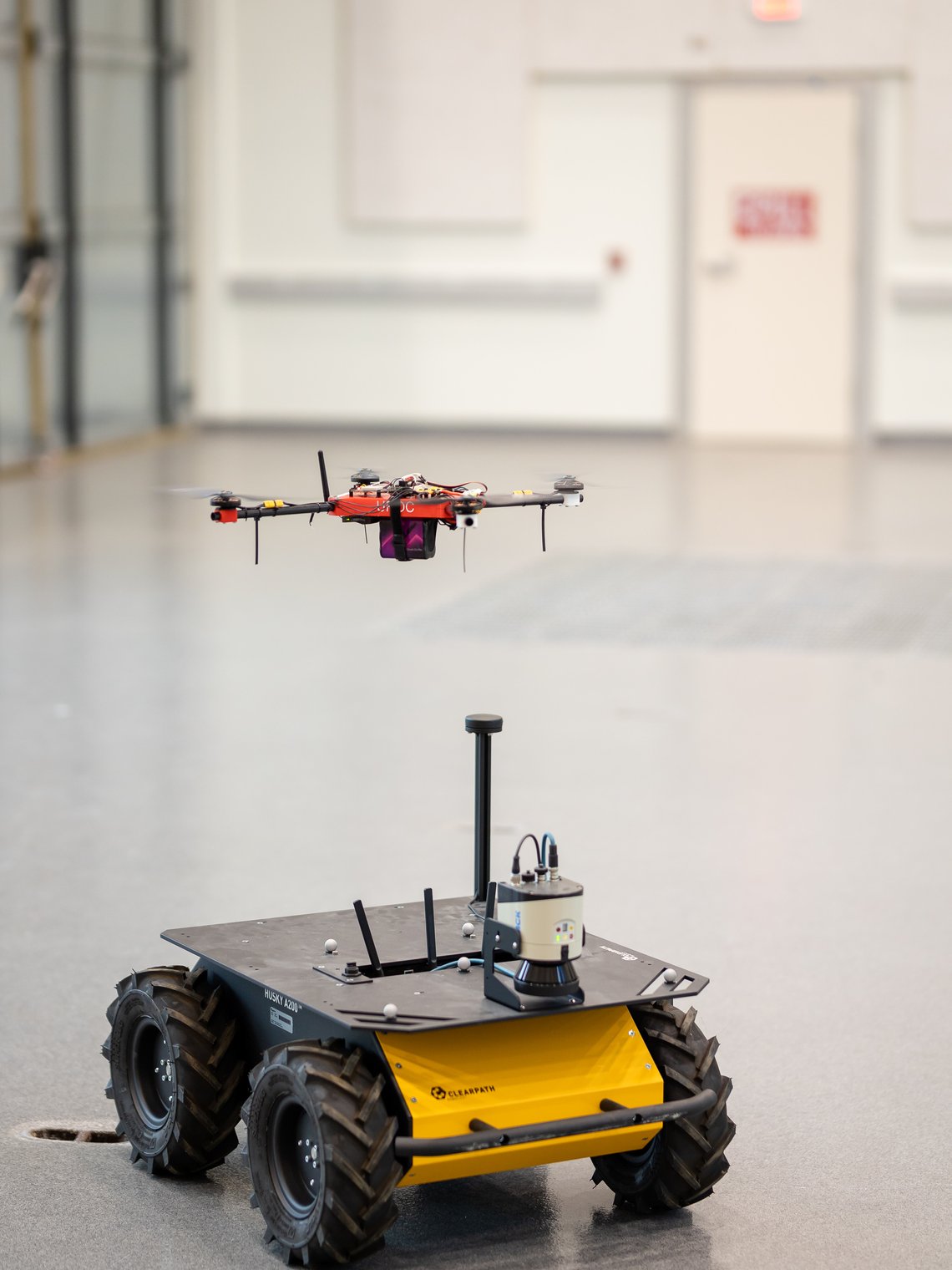Expanding our horizons: Southern Maryland continues development of drone technologies

In April 2019, a live kidney was successfully transported to a patient by way of drone technology, a closely coordinated effort that included the uncrewed aerial systems (UAS) Research and Operations Center (UROC), the University of Maryland School of Medicine and the University of Maryland Medical Center. Four years later, the success and importance of that transport has inspired new possibilities for drone tech use across a range of industries in an emerging part of the state’s expanding economic profile.
University of Maryland is eying new possibilities in Maryland to bring drone technology solutions to commercial spaces that will create new jobs, expand business growth and facilitate new industry.
The Chesapeake UAS Route Network (CURN) is managed within the University of Maryland’s UROC, based at the St. Mary’s County Regional Airport in California, Maryland.

Several federal agencies have partnered with UROC to examine how legislation, homeland security and industry intersect in policy to support this growth. This growing network includes collaboration with the Department of Homeland Security, the National Aeronautics and Space Administration (NASA), the National Oceanic and Atmospheric Administration (NOAA) and the Army Research Laboratory.
The UROC team’s expertise ranges from understanding complicated FAA rules and regulations to operational expertise and research with UAS. Their experience and focus on prioritizing safety ensure the responsible use of UAS in shared airspace. Former U.S. Naval Aviator John Slaughter serves as the director of UROC and says that new technologies and capabilities are poised to dramatically alter the current airspace picture.
“With CURN, we envision one day operating manned and unmanned aircraft cooperatively within the National Airspace System without the need for segregating them into different pieces of the airspace,” said Slaughter. “A unique benefit of Maryland’s geography is the potential to keep as much of the route network over water as possible, thereby minimizing risk to people and property on the ground and directly mitigating one of the two main risk areas for UAS operations.”
“CURN is intended to address some of the challenges posed by the fast-approaching era of Advanced Air Mobility, which includes not only drones but also piloted electric air taxis moving people and cargo in urban and regional settings. Helping solve the challenges locally has impacts not only for Maryland, but the entire country,” Slaughter said in another interview. “AAM represents a revolution in aviation that is right around the corner, and it will be at low altitude, electrically powered, and optionally piloted.”
“Supporters of Maryland’s innovation ecosystem are celebrating the creation of the Chesapeake UAS Route Network at UROC,” said Troy LeMaile-Stovall, TEDCO CEO. “It’s another important addition to Southern Maryland’s burgeoning autonomy corridor, which also includes a major Navy presence, local STEM industry partners and an array of University System of Maryland assets. This hub of aerial and autonomy activity is an exciting place to be, whether your passion is cutting-edge technology or growing the economy.”
Maryland is emerging as a national leader in drone technology innovation and piloted programming. Energy companies like Baltimore Gas & Electric (BGE) use the technology to inspect electrical linesto ensure greater safety for employees. Engineering students at the University of Maryland, College Park, are piloting drone design programs to support first responders in tactical training and emergency management.

Artificial Intelligence, advanced manufacturing and autonomous systems, like those used in the CURN program, are of major interest to employers and partners in the area. Tom Sadowski is the executive director of the Maryland Economic Development Corporation (MEDCO), and cites the AeroPark Innovation District — which includes the University of Maryland’s MATRIX Lab, SMART Building and UROC — as key to helping advance critical mission objectives for the Navy, federal agencies, businesses and other key partners with a major presence in Southern Maryland.
“It’s a perfect space for the collaboration of industry, government and academia in the advancement of technologies critical to our nation’s defense and the improvement of our everyday lives,” said Sadowski. “MEDCO is proud to be a strategic partner to advance this important work—and to help the future of not just Southern Maryland but the entire state of Maryland economy.”
Created in 2014, UROC experts leverage their approximately 150 years of combined experience in military and civilian aviation, engineering and project management to accelerate the safe, responsible application of UAS in public and private industries.
Slaughter alone has 30 years of experience with the Navy that includes flying helicopters and overseeing the operations and testing of fixed wing unmanned aerial systems; he also worked in the private sector for a defense contractor with an aviation focus.
Affiliations with both the UMD aerospace engineering department and the University System of Maryland allows for faculty partnership opportunities across departments and campuses. An immersive summer internship program for college students in St. Mary’s County ensures students can develop and test their UAS projects.
The UROC team conducts outreach to the local community, bringing STEM programs to local schools and encouraging interest in aviation. College students enrolled in relevant majors can avail themselves of internships and a potential future in a sought-after career in the aerospace industry.
Israel Jordan, the director of technical initiatives and strategy office for NAWCAD’s Webster Outlying Field (WOLF), is interested in connecting with these students.
“We have a pipeline looking for STEM talent, from engineers to data scientists,” said Jordan, noting the goal is for the students to eventually “apply that knowledge to help us be a leading-edge defense technology industry for the Department of Defense.”



